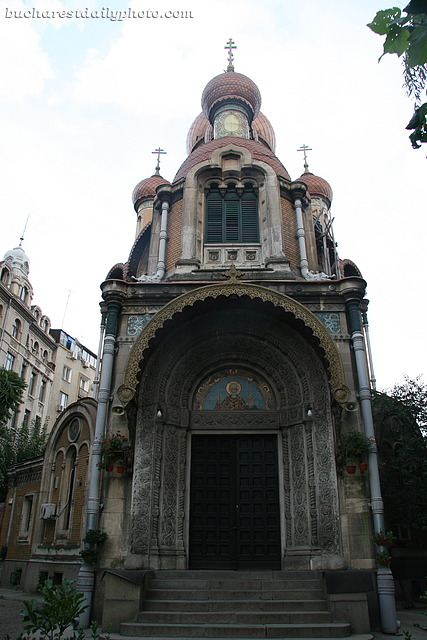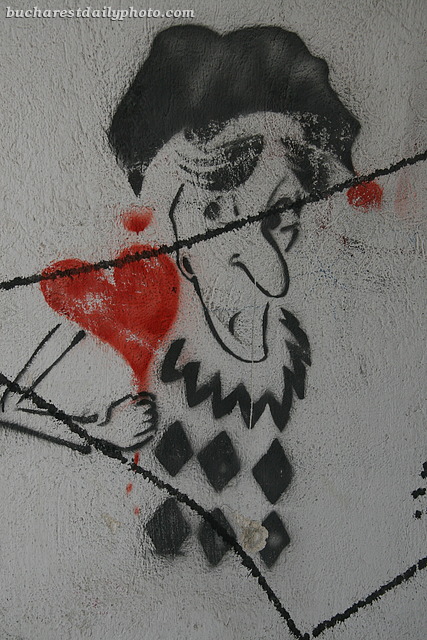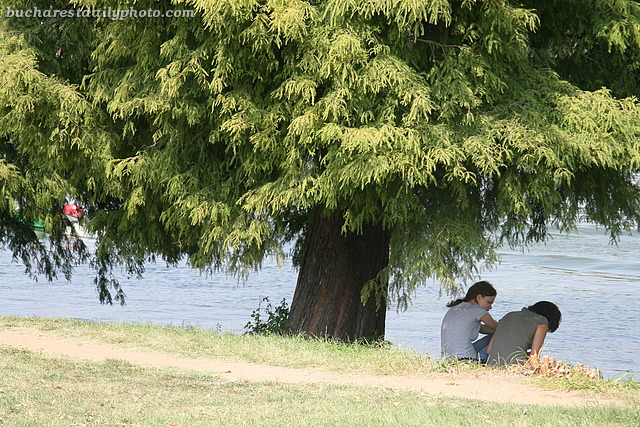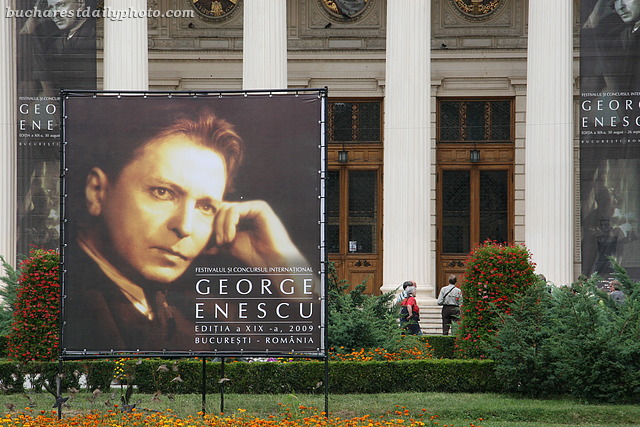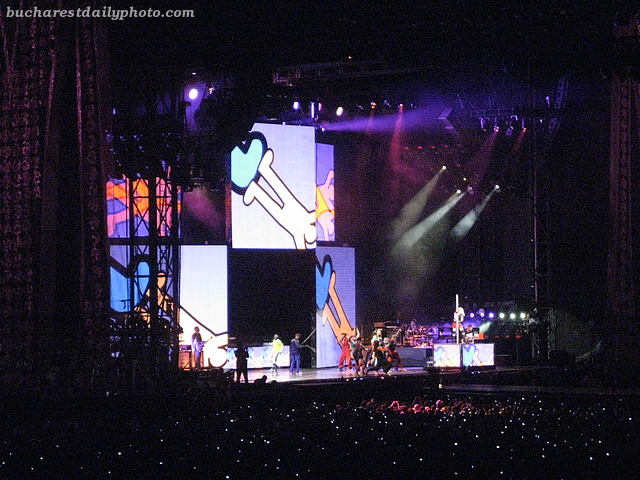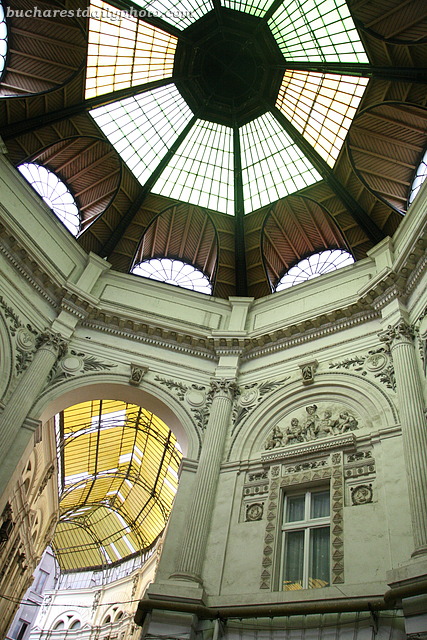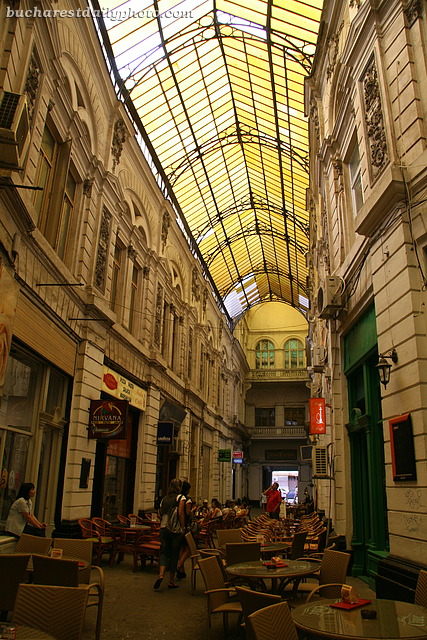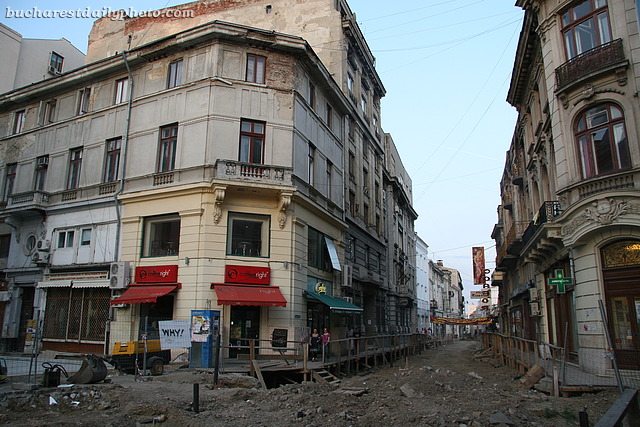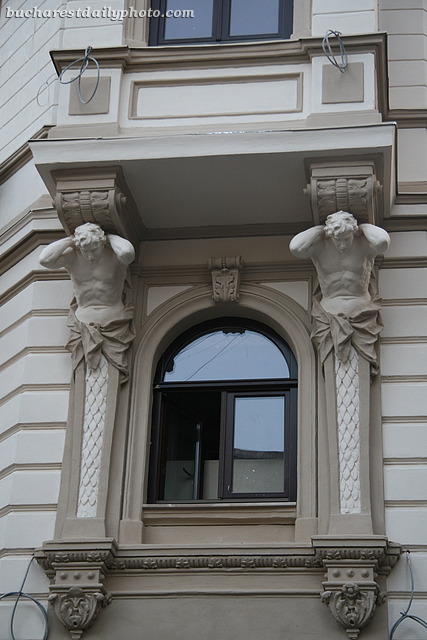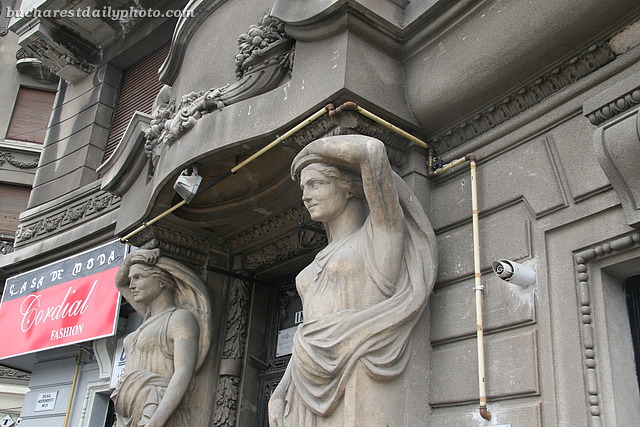If the onion dome architecture of the church in today’s photo makes you think of Russian Orthodox churches than you are on the right path. This is Bucharest’s Russian Church, or St. Nicholas Church after Emperor Nicholas II of Russia whose court provided the 600.000 gold rubles which were used for the construction of the building. The church was destined to be used by the employees of the Russian Embassy and by Russians living in Bucharest and service was initially held in Russian. The onion domes, which are not usual in Romania, were initially covered in gold. Construction lasted from the 1905 – 1909 under the guiding of the Russian architect V. A. Prevbrajenski. During WWI the church was closed and all valuables and the archive were transported to St. Petersburg where they were lost during the Russian Revolution. The church was transferred a couple of times from the authority of the Patriarchate of Moscow to the Romanian government and the Romanian Orthodox Church. The church is located downtown, close to the University of Bucharest and twice in its history it came under the patronage of the university (from 1934 to 1947 and again from 1992 to present time) for the use of the students and professors at the university. This is the reason the church is also known by a third name, “The Students’ Church”.
Today’s photo shows a graffiti about a fool in love. I found it in an entrace to the inner garden of bloc Dunărea, at University Square.
What’s there to do on a sunny Saturday afternoon, when summer is almost over and school will start soon? For example, you can sit in the shadow of a tree on the edge of the lake in Park Herăstrău and share secrets with your best friend.
Keeping with the musical theme but moving to the other end of the scale, the biggest Romanian clasical music event is starting in 2 days: the George Enescu festival. George Enescu is Romania’s most famous composer and this event is celebrated in his honour every two years. The festival was started in 1958 and 2009 will be its 19th edition which will run from August the 30th to September 26th. To honor the composer the festival includes at least one work by Enescu in its main concerts. Otherwise spectators can enjoy everything from symphonic and chamber music concerts to opera and ballet, even some classical music in jazz arrangements. In the beginning of this event, from August 30th to September 6th three international music competitions will take place for piano, violin and composition, one of the festival’s goals being to launch and promote young artists. Throughout the whole period events will be held in the square fronting the Athenaeum, including concerts by students from the music school, recitals and movie screenings. If you’re a classical music fan, than this is your heaven. More details here.
After Michael Jackson opened the gates by coming to Romania in 1992, many big names in music have made it to Bucharest. Depeche Mode, Sting, Rolling Stones, Metallica only to name a few, concerted in Bucharest in the last decade. It might not seem like a big deal to people who were born in a democratic country and it’s not a big deal to me now, but back in 1992 it was a dream come true. I went to highschool when the communist were still in power and to see such a concert with a Western pop star was unthinkable. I remember looking at smuggled videotapes with live concerts of bands that were popular at that time and thinking “If only I could be there”. Maybe because of this nostalgia I keep going to these big concerts. But I was planning to skip this one because I don’t care too much about Madonna and her music and as a form of protest to the high price of the tickets. I ended up buying the tickets by mistake (don’t ask, it’s a long and embarrasing story 🙂 )
Since the usual place for such gatherings – the National Stadium – is being renovated, Madonna performed for two hours in front of 60.000 people on a stage built especially for this event in Parc Izvor. It was maybe ironic that she perfomed so close to that humongous, ugly palace that Ceausescu, the former communist dictator, envisioned as the seat for his political power. It was Madonna’s first concert in Bucharest and it was a good concert, but not a great one. Many pop concerts are not so much about music but the whole show as an entertainment occasion: the music parts the stage with the light show, the coreography and dancing, the costumes. The atmosphere reached its peak when she payed homage to Michael Jackson. She also made a statement against the discrimination of gypsies and homosexuals in Eastern Europe. Still, there was something missing, that bit of magic that carries you away.
I would have to excuse myself for the quality of the photo. Only small cameras were allowed so I couldn’t take my SLR. I had to settle for a point and shoot Canon camera which I keep for situations like these, when I’m not allowed to bring my 40D.
Since my photo from yesterday seems to have been a great success (the number of visitors was double compared to the day before) I decided to post one more picture from the Macca-Vilacrosse Passage. Today’s photo shows the glass roof at the base of the U-shape and a bit of the building that supports the roof.
Vilacrosse and Macca are the two wings of a U-shaped pedestrian passage roofed with glass and wrought iron and lined with shops, cafes and restaurants. It’s one of the popular places for an outing with friends in Bucharest, the advantage being that you’re sheltered in case of rain but you’re still “outside”, in natural light. In this place you’ll find something for everyone: there’s are a couple of Egyptian cafes were you can puff at narghiles, a rock themed Blues Cafe with pretty good music, a Romanian restaurant, a French Bistro, even a Chinese restaurant. I’ve spend hours here sipping wine or drinking coffe and chatting with friends. It’s not easy to find an empty table on a summer evening. The passage was built in 1890-1891 after a design by architect Felix Xenopol. This elegant arched structure was probably intended to look French since this was back at the end of the 19th century when they aspired to transform Bucharest into “little Paris”, but the feel today is more Oriental than Western. During the communist period the passage was renamed Jewellery Passage (Pasajul Bijuteria) because the city’s largest jewelery store was located close by. It’s original name was restored in 1990.
Bucharest’s Old Town, also called Lipscani area or Historical Centre, is what was left after the former communist dictator Ceausescu finished the work done by the allied bombings of 1944. And what’s left – around 300 historical houses, a few churches and the remains of the old palace and court of Vlad Ţepeş (1459-1462) – is unfortunatelly for the most part managed by Bucharest’s City Hall which has spent years delaying the most needed restorations. Old Town was Bucharest’s merchant area starting with the middle of the 17th century until the middle of the 20th century when the owners were arrested by the communists and the houses were taken over by the Gypsies. The Gypsies didn’t take good care of the buildings so the houses slowly degraded. Nowadays some of the owners or their heirs came back to reclaim the properties but some are still disputed and degrading still. Some of the buildings have been restored and are now functioning as restaurants, cafes or shops as on Smârdan Street. Finally, in 2006 the City Hall chose a Spanish company to start rebuilding the infrastructure in the Historical Center but early this year the project was stopped due to a quarrel between the City Hall and the contractor. A few streets are already restored but most of them are pretty difficult to walk as they were dug up for the planned street repairs. I’ve heard many people say that this area has great potential and it could transform into something unique in Europe. It seems like the City Hall achieved this already. It is indeed unique to walk along rudimentary wooden planks in the center of an European capital.
Compared to the charming ladies from yesterday, who seemed to be very much at ease with bearing their load, these guys are doing some heavy lifting. Look at how their abdominal muscles are showing. I hope they won’t be left with back problems. Again, according to wikipedia, “The later male counterpart of the caryatid is referred to as a telamon (plural telamones) or atlas (plural atlantes) – the name refers to the legend of Atlas, who bore the sphere of the heavens on his shoulders.” The balcony belongs to a house on Smârdan Street.
These graceful ladies are carying a heavy burden on their heads, the balcony above the entrance to the Adriatica-Trieste building in United Nations Square. According to wikipedia, it was the Greeks who came up with the idea of using female figures as decorative supports instead of columns or pillars. They are called caryatids from the Greek word “maidens of Karyai”, an ancient town of Peloponnese which had a famous temple dedicated to the goddess Artemis.
